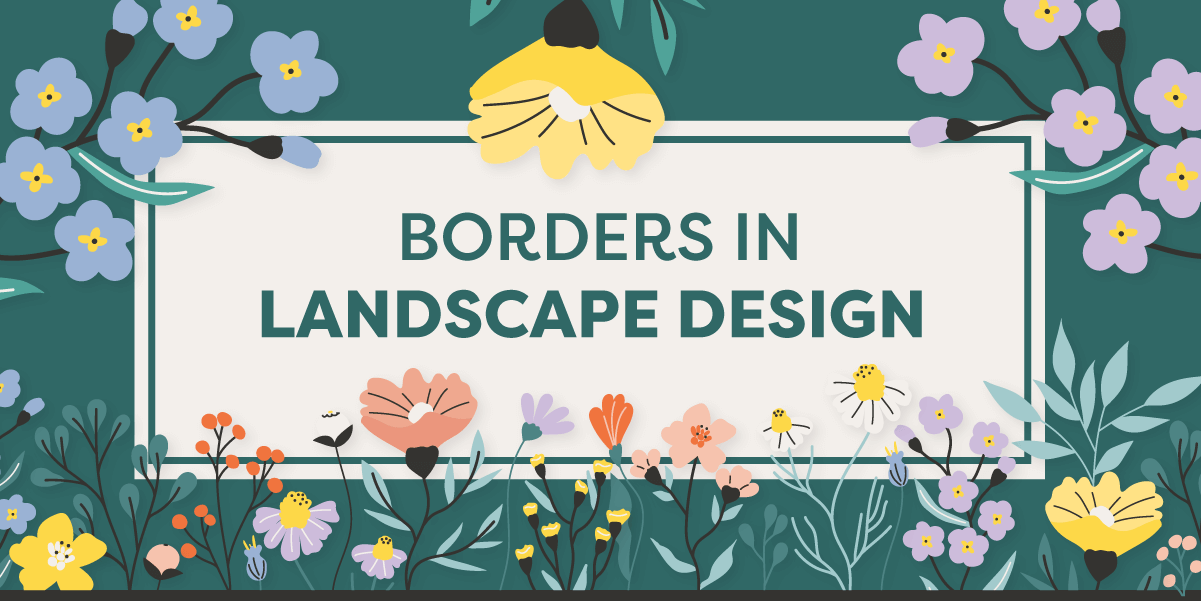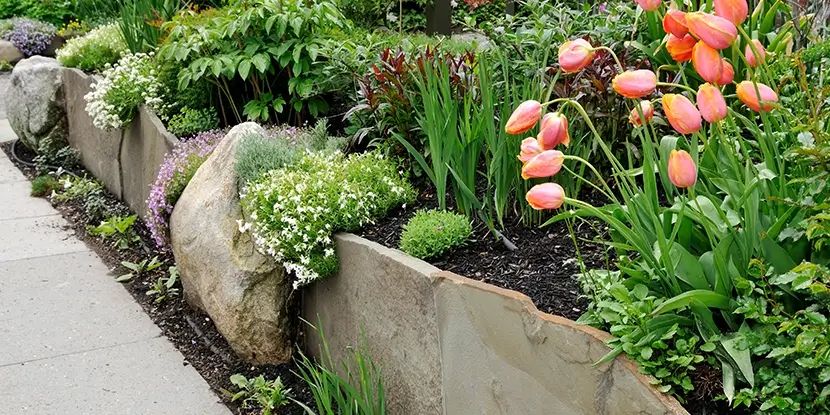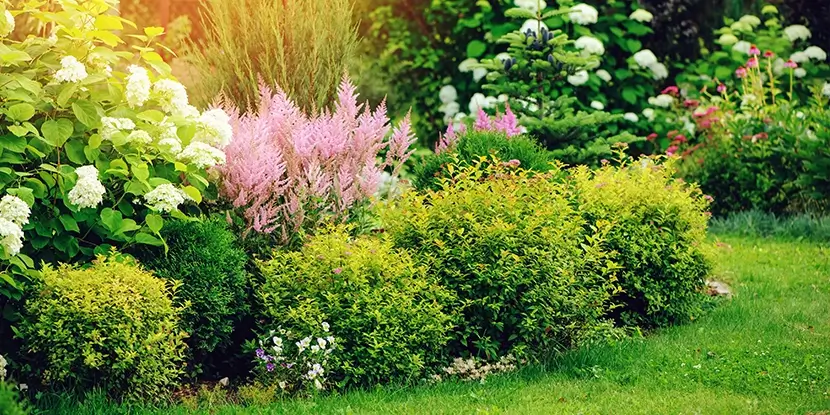Perennials are versatile plants with various creative uses in the garden, offering infinite exciting combinations. They add color, form, and texture, often for many years and with minimal maintenance. Looking at some landscape possibilities should stimulate ideas for your yard or garden.
The Perennial Border
The perennial border came from England as a version of the cottage gardens that evolved during the 17th and 18th centuries. Gertrude Jekyll and William Robinson proposed this style in rebellion against Victorian gardens.
The gardens of upper-class Victorians were typically geometric masses of brightly colored annuals maintained at a uniform height. Known as “bedding out,” this style gained popularity after 1845 when the British government lifted the tax on glass, which lowered the cost of building greenhouses and made it possible to produce annuals economically and in quantity.
Jekyll and Robinson applied more natural combinations of plants, mostly perennials, in their gardens. They extended the flower season from a few months in spring and summer to all year long using bulbs, ornamental grasses, and old-fashioned plants and herbs collected from the simple gardens of English cottagers.
Earth and plant forms inspired the new concept of garden design as the plants’ seasons, ecology, and arrangement in nature created the basis for the design revolution.
Jekyll designed the English herbaceous border, carefully selecting plants and arranging them in long clumps of color she called “drifts.” She chose varied forms, heights, colors, and textures in her borders. Using light and shade also contributes to the design adding depth and dimension for balance.
English herbaceous borders were typically limited by constructed walls or hedges, providing a sense of continuity or organization. Strong, simple organization contrasts with the variety of plants, each displaying different colors, forms, and textures and reaching its peak at a different time of the year.
The design philosophies used by Jekyll, Robinson, and others are as appropriate today as ever. The challenge for designers is to be familiar with plants adapted to Southern California so that the English herbaceous border can be successfully integrated into our climate, topography, and lifestyle.
Herbaceous borders require considerable space to be at their best. For small properties, a cottage garden may be a more appropriate border. There are always exceptions, but minimum dimensions for borders should be 5 to 6 feet wide and 20 to 30 feet long. Wider and longer borders offer more opportunities for manipulation and gradation of color, form, and texture.
The Mixed Border
The mixed border combines perennials, annuals, and flowering shrubs. The same design concepts that apply to the herbaceous border also apply to the mixed border. However, it will usually require more space since the effect is partially dependent on shrubs like old roses and small, flowering trees.
Showing little bare ground is essential for a fuller, more satisfying appearance. Less bare ground also means less opportunity for weeds to grow and compete with the ornamental plants.
In this manner, old garden roses offer many possibilities for integration with perennials and annuals. Many old roses are large and handsome shrubs, but many intermediate and smaller types are well-suited to modest-sized properties.
Climbing roses and other flowering vines may also be trained on walls, trellises, and arbors to provide a sense of vertical space, which is useful in developing gardens into a series of outdoor rooms. The plan allows for the design of smaller areas featuring specific color ranges, plant specialties, or other garden themes.
Annuals are a way to quickly fill empty spaces and provide quick color in mixed borders. Mixed borders may appear sparse for the first year or two after planting because roses and other flowering shrubs need time to develop. During this interim, annuals can provide necessary fillers.



